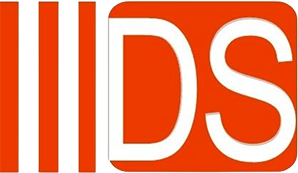-

EN545 Ductile Iron Pipe Coating
Before spraying, the surface of ductile iron pipes must be dry and free of rust, attached particles, oil, and other foreign matter. Unlike SML pipes, ductile iron pipes do not require sandblasting pretreatment due to the inherent properties of the material. Ductile iron pipes, through a spheroidi...Read more -

EN545 Standard: Ductile Iron Socket and Spigot Pipe & Socket Dimensions
1. Ductile Iron Sliding Flexible Joint The most common joint type for ductile iron pipe, the T-joint relies on contact pressure between the rubber ring and the socket and spigot (partially generated by pre-compression during installation) to create a seal against fluids. The socket design takes ...Read more -

EN545 Standard: Fasteners, Coatings & Seals
EN545 is a key European standard for “ductile iron pipes, fittings, accessories, and joints for water supply.” It ensures the safety, reliability, and durability of drinking water distribution systems. A thorough understanding of this standard is crucial for professionals involved in ...Read more -

Comparative Tensile Testing of Ductile Iron Pipe and SML Pipes According to EN10002-1
Tensile testing of metal materials is a core method for evaluating their mechanical properties and is of great significance. By measuring parameters such as tensile strength, yield strength, and elongation, it quantifies the material’s load-bearing capacity and plastic deformation character...Read more -

EN4016: A Guide to Fasteners for Ductile Iron Pipe Systems
In ductile iron pressure piping systems, fasteners (such as bolts, nuts, and gaskets), though small, are critical components for ensuring the tightness, structural integrity, and safe operation of pipe connections. EN4016, “Ductile iron pipes, fittings, and accessories – Drinking wate...Read more -

Mechanics of a Secure Connection: Understanding EN545 Detachable Joints
Detachable joints play a crucial role in the installation and maintenance of ductile iron pipes. They provide a flexible and reliable connection solution, particularly when connecting ductile iron pipe (DIP) to other materials, such as steel pipe, PVC pipe, valves, or fire hydrants. Detachable jo...Read more -

Advancing EN545 Standard Expertise
In previous articles, we explored the basic concepts, material properties, and core advantages of EN545 standard ductile iron pipe in the water industry. This article will delve into more specific and critical technical aspects, including ovality control in the manufacturing process, the product ...Read more -

EN1092-2: Safe and Compliant European Flange Connections
In modern industrial piping systems, the safety and reliability of flange connections are crucial. EN1092-2, developed by the European Committee for Standardization (CEN), is the core technical specification for ensuring the quality and compatibility of cast iron flange connections. This article ...Read more -

The Bolt Secret: How Gasket Pressure Relies on Bolt Count
Ductile iron pipes, due to their high strength, toughness, and corrosion resistance, have become the workhorse of fluid transportation in numerous fields, including municipal water supply, industrial water distribution, and fire protection systems. The key to connecting these pipes into a reliabl...Read more -

Differences in Cement Linings for Ductile Iron Pipes EN197-1
Ductile iron pipes are widely used in water pipelines due to their high strength, toughness, and excellent durability. To prevent internal corrosion and ensure water quality, they are typically lined with cement mortar (CML). The type of cement used in these linings is crucial, depending on the a...Read more -

EN196-1 Determination of Compressive Strength of Cement
The cement-mortar linings for ductile iron pipes is primarily used to prevent corrosion and scaling on the inner wall of the pipe, ensure water quality, and reduce hydraulic friction losses. However, the core European standard EN196-1 specifies the method for determining the strength of cement mo...Read more -

Adherence to ISO2531: The DINSEN Standard for Ductile Iron Pipe Quality
At the heart of infrastructure and fluid transportation systems, every section of ductile iron pipeline carries not only water and gas, but also the pulse of urban development and the well-being of citizens. Here, quality is more than just empty talk; it’s a belief and commitment woven into...Read more
© Copyright - 2010-2024 : All Rights Reserved by Dinsen Featured Products - Hot Tags - Sitemap.xml - AMP Mobile
Dinsen aims to learn from world famous enterprise like Saint Gobain to become a responsible, trusty company in China to keep improving the human being life!









